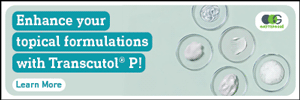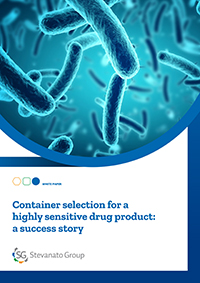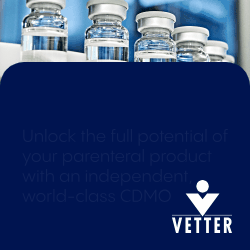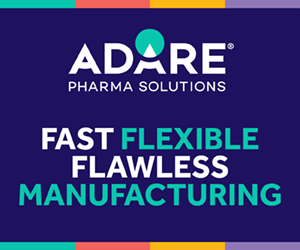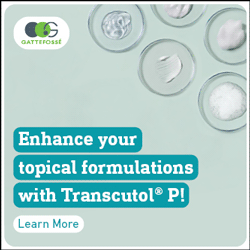Injection Devices
Terumo Announces Commercial Launch of the Immucise Intradermal Injection System
Terumo Corporation (TSE: 4543) recently announced the commercial launch of its Immucise™ Intradermal Injection System, which is designed to deliver vaccines and other approved drugs…
Alvotech Expands its Capacity in Assembly and Packaging with the Acquisition of Ivers-Lee in Switzerland
REYKJAVIK, Iceland and BURGDORF, Switzerland, Alvotech (NASDAQ: ALVO), a global biotech company specializing in the development and manufacture of biosimilar medicines for patients worldwide, today…
Simtra BioPharma Solutions Expands Halle/Westfalen, Germany Facility with the Addition of a New Production Building
HALLE (WESTFALEN), Germany, Simtra BioPharma Solutions announced today that it completed the construction of its new production manufacturing building at its campus in Halle, Germany. As…
Vetter Marks the Start of New Clinical Site Construction with Groundbreaking Ceremony
Pharmaceutical service provider expands its footprint in the greater Chicago area Production site expected to be fully operational by the end of 2029 Modern site…
Positive Top Line Results from Confirmatory Efficacy Study for Proposed Biosimilar to Xolair (omalizumab)
REYKJAVIK, Iceland and PISCATAWAY, N.J. and LONDON, Alvotech (NASDAQ: ALVO), a global biotech company specializing in the development and manufacturing of biosimilar medicines for patients…
Sever Pharma Solutions Announces Commercialization of New Aseptic Fill and Finish Line for Prefilled Syringes in Malmö, Sweden
MALMÖ, SWEDEN– Sever Pharma Solutions, a leading CDMO, proudly announces the commercialization of its new state-of-the-art aseptic fill and finish line for prefilled syringes, capable…
Sanner has officially launched manufacturing operations in Greensboro, North Carolina
The new facility is dedicated to producing critical injection-molded components for medical devices and pharmaceutical packaging, as well as desiccant solutions. This expansion reflects Sanner’s…
Lifecore Biomedical Signs New 10-Year Commercial Manufacturing and Supply Agreement with Key Existing Custome
CHASKA, Minn., Lifecore Biomedical, Inc., a fully integrated contract development and manufacturing organization (“CDMO”), today announced that it has signed a new 10-year commercial manufacturing…
Abbott & Medtronic Pest Positioned Manufacturers in US Neurology Market
As US tariff policies evolve in 2025, neurology device manufacturers face rising cost pressures and growing uncertainty over production strategy. However, Abbott and Medtronic are…
SPECIAL FEATURE- Outsourcing Formulation Development & Manufacturing: CDMOs Are Making Their Supply Chains More Resilient & Secure
Contributor Cindy H. Dubin speaks with many CDMO professionals to get their insights and perspectives on the current state of the industry.
WHITEPAPER - Container Selection for a Highly Sensitive Drug Product: A Success Story
When Stevanato Group is involved from the early stages, before the container is even chosen, we can support the client with a comprehensive data-driven analysis so the client can make an informed choice and select the optimal solution for their drug product.
Amneal & Apiject to Expand Sterile & Blow-Fill-Seal Capabilities for Advanced Pharmaceutical Manufacturing in the US
Amneal Pharmaceuticals, Inc. and Apiject Systems, Corp. recently announced a strategic collaboration to expand domestic production of Apiject’s BFS-based injectable platform at Amneal’s Brookhaven, NY…
SPECIAL FEATURE - PFS & Parenteral Delivery: Innovation Is Focused on Patient-Centric, Smart & Sustainable Solutions
Contributor Cindy H. Dubin speaks with several innovating companies to discuss trends in PFS as well as advancements in autoinjectors and innovations in parenteral delivery.
Stefan Seuferling Takes Over Management of the Gerresheimer Medical Systems Business Unit
Gerresheimer, an innovative system and solution provider and a global partner for the pharma, biotech and cosmetic industries, has arranged the management succession for its…
Enable Injections Announces Regulatory CE Mark Approval in Europe for enFuse Technology
Enable Injections, Inc. recently announced it has received its European Union Medical Device Regulation (EU MDR) CE Mark approval of the enFuse Syringe Transfer System. This…
Kindeva Drug Delivery Awarded Up to $129 Million to Supply DuoDote Autoinjectors to the Strategic National Stockpile
Kindeva Drug Delivery’s global health security division, Meridian Medical Technologies, LLC, secured a contract valued at up to $129 million to supply DuoDote, a chemical nerve…
Vetter Introduces the Next Evolution of the V-OVS Syringe Closure System
Vetter recently announced the development and upcoming launch of the new version of its proprietary V-OVS® syringe closure system. The new closure, V-OVS next, will further…
2025 COMPANY PROFILES & CAPABILITIES
For each participating company, this section presents a detailed summary highlighting their core technologies, capabilities, technologies, and services.
First FDA-Approved Treatment for Severe Frostbite Now Commercially Available in the US
SERB Pharmaceuticals recently announce Aurlumyn (iloprost) Injection, the first FDA-approved treatment for severe frostbite in adults to reduce the risk of digit amputations, is now…
Exclusive UniSafe Distribution Agreement Between Owen Mumford & NIPRO Exceeds Expectations in Japan With New Biosimilar Launch
Owen Mumford, a global leader in medical devices, recently announce its exclusive agreement with Osaka-based NIPRO CORPORATION (NIPRO) to distribute drug delivery device UniSafe® has…
What are Injection Devices?
Drug delivery devices are the physical agents that are included in the drug delivery system. There are a multitude of devices that people interact with every day which fall under this category. In modern pharmaceuticals, novel drug delivery devices and combination products are being designed for a number of reasons, including giving patients the ability to self-administer some medications at home, which can help them adhere to recommended regimens.
Evolution of Injection Devices
With modern technology and medicine, the combination product market is evolving. Any combination device, especially drug device combination devices, must follow strict guidelines. Thanks to advancements in engineering, an increasing number of drug delivery devices are being developed as electromechanical devices linked to apps in order to provide patients with more supervision when administering medications at home. Some of these medical apps may receive feedback from the device to track how much drug is being administered and how often, provide patients with dosing reminders and connect clinicians with this information so they can monitor patient compliance. The drug delivery devices that so many patients depend on must adhere to regulatory standards. There are strict guidelines for all methods of drug delivery, such as needle-based, aerosol, and needle-free injectors.
Smart devices, interconnectivity, and related technology provide real-time data to healthcare providers for analysis, but these device additions should not increase risks, including patient understanding of treatment delivery, or jeopardize compliance. Data collection needs to be “passive” to the patient. In other words, invisible to the patient’s use of the device so that the collected data provides a true benefit to the end user. If these design considerations can be implemented without impacting the patient or how they administer and receive treatment, then smart devices can provide advantages to the patient and the industry.
Injection Device Global Market Trends
The global injectable drug delivery devices market is expected to show significant growth in the coming years as manufacturers introduce technological advancements and product innovation meant to improve convenience, compliance, and ease of administration of parenterals. Additionally, the increasing preference for at-home self-injection is driving the market as patients prefer to continue to avoid healthcare settings post-COVID. With all of this taken into account, one market study predicts the global market to reach almost $26 billion by 2025, up from $15 billion in 2020. However, another report values the global market at $42.76 billion in 2021 and expects it to reach $50.9 billion in 2025.
How the numbers will play out is yet to be determined, but the studies do highlight the focus on single-use and reusable systems. Disposable-use prefilled syringes (PFS) are increasingly used due to the prevalence of chronic diseases and the growing number of biologics best delivered by syringes. Single-use autoinjectors are also poised to experience increased demand, particularly with the growing pervasiveness of anaphylaxis disorders. Autoinjectors also provide a convenient alternative to manual syringe injections for subcutaneous administration.
Reusable Injection Devices
Pen injectors with prefilled cartridges have also proven to be a viable alternative to syringes. These injectors can perform hundreds of injections, with patients controlling the speed of delivery to minimize pain or discomfort during use.
Making injection devices partially reusable is a cost-saving strategy. Ideally, the device’s mechanism and/or electronics are the reusable parts of the system – as these are often the costliest – and the drug containers and needle are one-time use.
Another cost-saving strategy that several large pharmaceutical companies are deploying is to develop a device platform for multiple drug products in their portfolio. This allows them to spend resources on a single significant development program, for one optimal injection device, which then requires minimal customization for each sub-sequent product line.
Despite efforts to make better, safer, simpler injection devices, patient adherence is still a challenge associated with self-administration. This has resulted in the emergence of smart devices, such as wearable injectors, which share patient data with healthcare providers to ensure compliance. And while it is expected this sector will continue to grow, some industry insiders warn against making these devices too intrusive.




